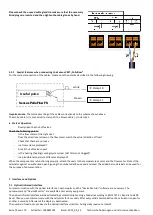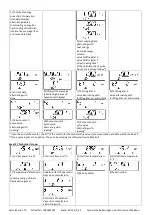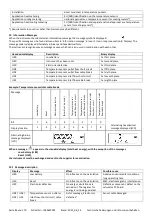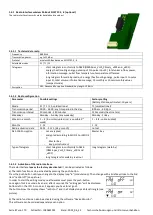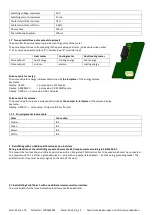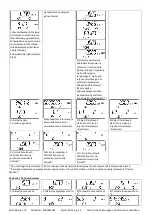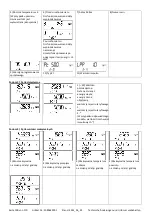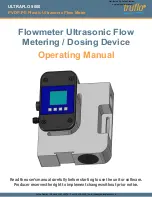
Seite 90 von 170 Artikel Nr.: 1080622001 Stand: 2022_06_24 Technische Änderungen und Irrtümer vorbehalten.
IEC 60364-5-51 (2005-04)
Electrical installations of buildings - Part 5-51: Selection and erection of electrical
equipment - Common rules
IEC 60364-5-54 (2011-03)
Low-voltage electrical installations - Part 5-54: Selection and erection of electrical
equipment - Earthing arrangements and protective conductors
EN 50310 (2011)
Application of equipotential bonding and earthing in buildings with information
technology equipment
EN 1434-2 (2016)
Heat Meters - Part 2: Constructional requirements
1.5.2 Technical data pulse inputs
Pulse input class
IB according to EN 1434-2:2016
Connecting cable length
1 m
Voltage supply
+ 3 V DC
Source current
= 1,5 µA
High level input threshold
U
≥ 2 V
Low level input threshold
U
≤ 0,5 V
Pull-up resistor
2 MΩ
Pulse length
≥ 100 ms
Pulse frequency
≤ 5 Hz
1.5.3 Possible combinations of the different input (class IB) and output (class OA) devices
Class IA
Class IB
Class IC
Class ID
Class IE
Class OA
yes
yes
no
yes
no
Class OB
yes
no
no
yes
yes
Class OC
no
yes
yes
no
no
Class OD
no
no
yes
no
no
Class OE
no
no
no
no
yes
1.5.4 Setting up the three additional pulse inputs
The optional pulse inputs 1 + 2 + 3 for external meters can be set up using a suitable configuration software. You can configure
serial number, manufacturer, version (0 … 255), medium code, input pulse value, unit and starting value of the external
meters.
1.5.5 Set-up possibilities
Pulse value
Units
1
liters / kWh / pulse without unit
2,5
liters / kWh / pulse without unit
10
liters / kWh / pulse without unit
25
liters / kWh / pulse without unit
100
liters / kWh / pulse without unit
250
liters / kWh / pulse without unit
1000
liters / kWh / pulse without unit
Installation notes for pulse inputs:
It is important that the pulse cables not be affected by (or exposed to) an external voltage!
Check the polarity of pulse generators with “open collector“ outputs.
The cable wires must not touch each other during installation, otherwise pulses will be counted in the instrument.
When setting up the meter it may be necessary to adjust the meter reading of the instruments connected and the pulse value
using a suitable configuration software.
For transmitting the values of the pulse inputs via radio, transmission must be set using a suitable configuration software
, if
the meters were not already ordered with the transmission of these values set.




